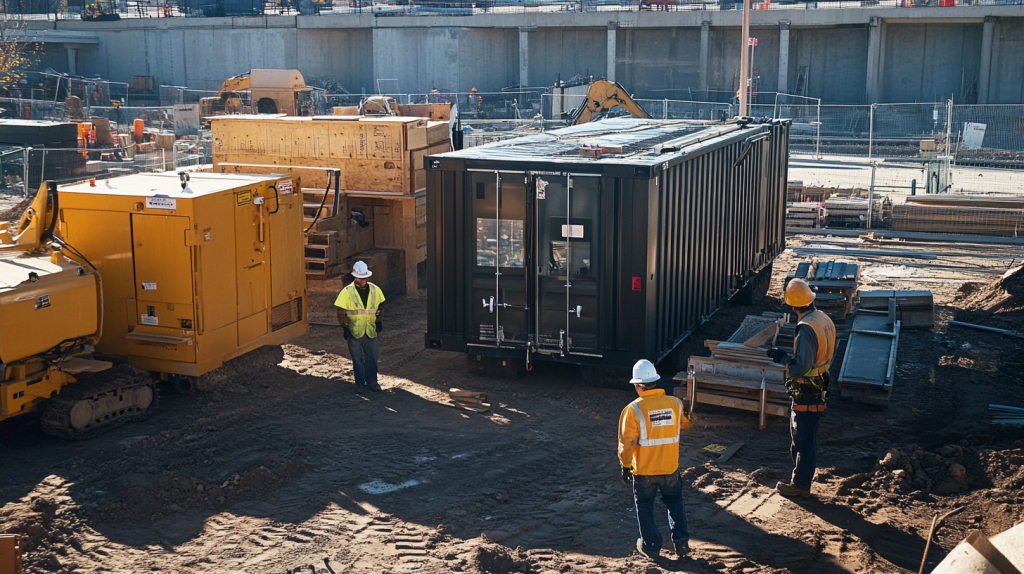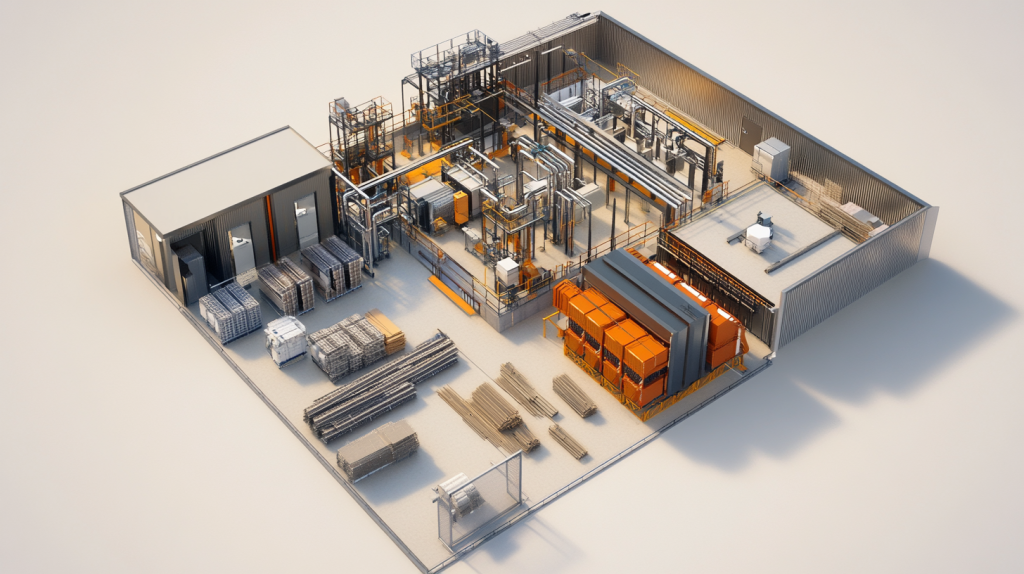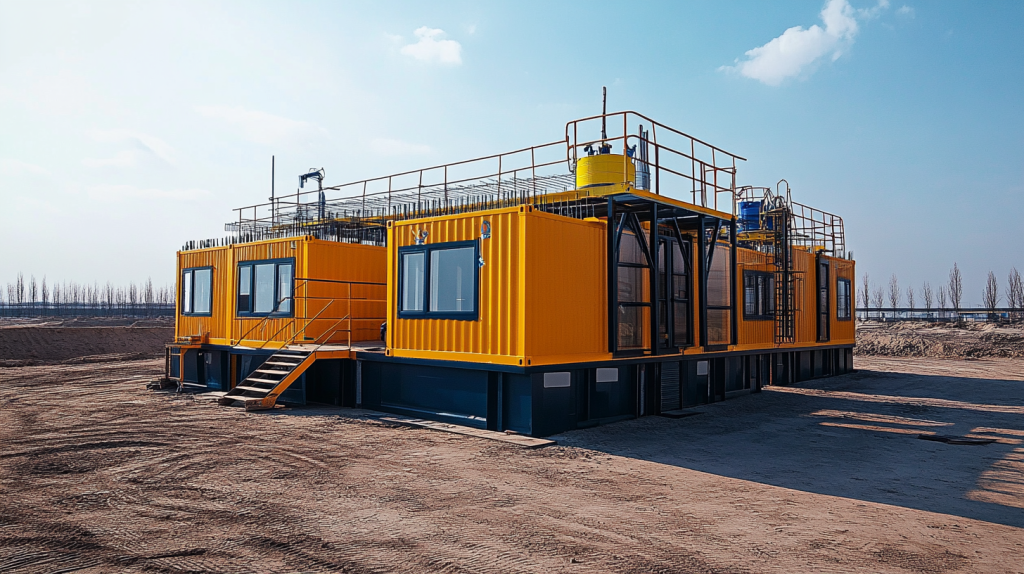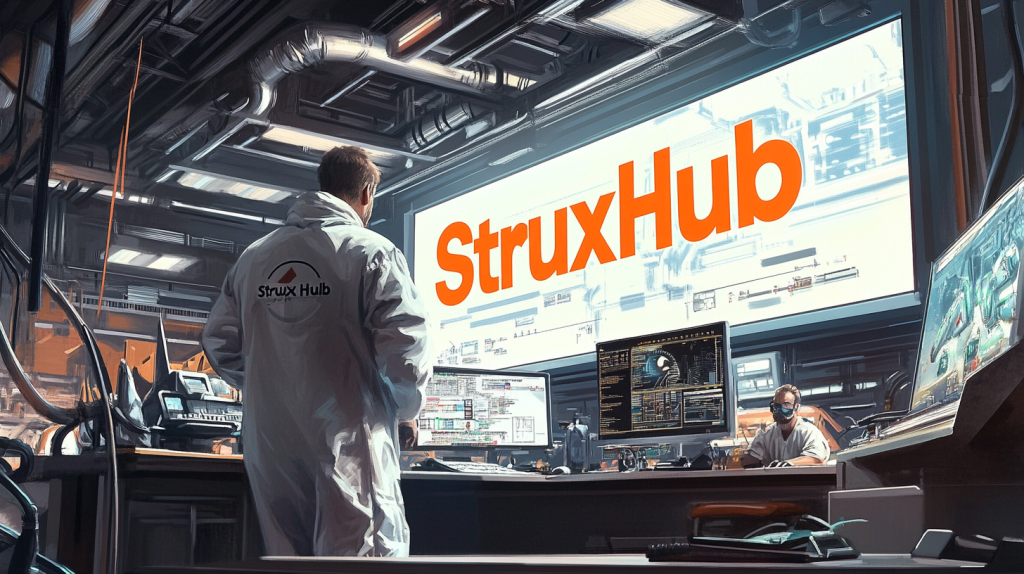Modular Construction Delays: How Trump’s Tariffs Are Disrupting Your Prefab Build Schedule
Table of Contents:
As modular construction gains popularity for speed and cost-efficiency, recent spikes in material tariffs are throwing a wrench into even the most well-oiled prefab machines. In 2025, construction superintendents and project execs are facing a harsh reality: steel tariffs, overseas shipping delays, and supplier uncertainty are driving up costs and extending build times — especially for commercial projects that rely on prefab steel modules and aluminum components.
This article breaks down how these global pricing pressures are reshaping project planning, vendor decisions, and construction management workflows — and what industry pros can do to stay ahead.

Why Modular Construction Projects Are Getting Slower and Pricier
As the commercial construction industry leaned into modular building methods for speed, scalability, and reduced on-site labor, 2025 introduced an unexpected wrench in the works — tariffs. While modular construction was once seen as the answer to rapid development needs in sectors like healthcare, hospitality, and multifamily housing, its reliance on imported steel and aluminum has made it extremely vulnerable to international trade disruptions. The recent wave of tariff hikes, including a 25% duty on steel and aluminum from key exporting countries, has dramatically shifted project feasibility and profitability.
What once took 8 months to assemble can now stretch well beyond a year — not because the method has failed, but because the supply chain has. Developers who relied heavily on prefabricated metal frames, structural panels, and modular pods are now confronting long lead times, abrupt price surges, and frustrating vendor renegotiations. These challenges are especially pronounced in fast-track projects where every week of delay represents thousands (or millions) in lost revenue. As firms scramble to adapt, many are realizing that their modular strategies need to be re-engineered to factor in real-time tariff impacts and smarter procurement coordination.
So, what exactly is driving this slowdown — and how can construction leaders get ahead of the prefab curve again?
The core issue isn’t modular construction itself — it’s the ecosystem surrounding it.
Prefabrication relies heavily on coordinated international supply chains, particularly for structural steel modules, curtain wall panels, and integrated MEP systems. When tariffs are suddenly imposed, it creates cost volatility and shipment delays that throw entire project schedules off balance. These changes often happen mid-project, forcing construction leaders to renegotiate contracts, stall mobilizations, or shift to less familiar suppliers — all while trying to keep clients and stakeholders satisfied.
For superintendents on tight delivery timelines, these delays don’t just affect the bottom line — they cause ripple effects throughout the field, including crane rescheduling, workforce idling, and disrupted inspections.
Addressing prefab volatility requires two primary changes: proactive supplier diversification and smarter digital coordination. Project leaders must establish a wider base of prefab vendors — both domestic and offshore — to ensure continuity if tariffs affect one source. At the same time, investing in real-time project management platforms like StruxHub can help teams visualize the material impact of delays across the schedule, rather than discovering them when it’s too late. By centralizing delivery milestones, procurement status, and vendor communications, teams can better respond to disruptions and avoid cascading delays.
Best Practices
- Vet multiple prefab suppliers early in the design stage, focusing on both U.S. and international vendors.
- Add buffer zones into construction schedules to account for unexpected customs delays or material substitutions.
- Integrate procurement tracking into your construction management software to identify red flags in real-time.
The modular construction model still holds enormous promise — but only for teams willing to evolve with the new global pricing realities. With tariffs becoming a regular feature of international trade, construction leaders must future-proof their prefab strategies by building flexibility into their vendor network and leveraging smarter management tools. Companies that treat prefab as a static “plug-and-play” solution will face costly setbacks, while those who embrace agility will turn volatility into competitive advantage.
Tariffs and Steel: A Dangerous Duo for Prefab Logistics
Modular construction thrives on predictable supply chains — and steel is its backbone. From volumetric steel frames to steel-reinforced MEP modules, nearly every prefab component relies on the timely delivery of affordable, high-quality steel. But in 2025, newly reinstated tariffs on steel imports from countries like China, Vietnam, and India are creating an unpredictable landscape for project logistics. Freight costs are rising, supplier negotiations are stalling, and many contractors are left scrambling to reprice contracts midstream.
These disruptions don’t just hit large infrastructure projects. Mid-size commercial builds — offices, hotels, senior living, and mixed-use developments — are getting hammered with budget overruns and multi-week delivery gaps. The challenge isn’t just the higher cost; it’s the ripple effect through everything from procurement to scheduling, and even compliance inspections. The result? Entire prefab logistics pipelines are being rerouted or rebuilt on the fly — a nightmare for any superintendent on a tight timeline.

The Real Risk of Steel Dependency
Prefab vendors who rely on overseas steel are seeing 20–30% cost hikes. When steel orders stall, module delivery gets pushed back — delaying everything from envelope closure to final inspections.
Supplier Communication Gaps
Many field teams aren’t notified of a delay until the shipment fails to arrive. Without connected communication tools between vendor, procurement, and field, schedules break down quickly.
Strategies for Smoother Logistics
- Use software with vendor milestone syncing — this links prefab production with actual shipping progress.
- Add a procurement risk register in your management platform to flag exposure to high-tariff materials.
- Ask vendors to pre-load shipping data and tariffs into project dashboards for visibility at the planning phase.
What This Means for Your Next Build
Tariffs are no longer just an economic headline — they’re a logistical landmine. Teams that proactively monitor global steel pricing and integrate that intelligence into planning will dodge costly missteps. Those that don’t? They’re setting themselves up for schedule chaos.

How Delayed Modules Derail On-Site Schedules
Prefab is meant to streamline construction — but when module deliveries are late, it can unravel even the most coordinated site operations. Many construction leaders are learning the hard way that factory delays caused by tariffs, shipping slowdowns, or customs holds don’t just affect one stage — they jam the whole pipeline. Framing crews are sidelined. Inspections are rescheduled. Cranes sit idle. And superintendents are left holding the bag.
The irony? Prefab was sold as the solution to unpredictable labor and tight timelines. But without integrated planning tools and delay contingency protocols, its benefits get buried under costly chaos.
Cascading Field Delays
A single container delay from Asia can throw off framing start dates, pushing drywall, inspections, and even occupancy permits into the danger zone. Every day costs money.
Coordination Breakdown
When prefab delivery isn’t tied to live project schedules, field teams may prep prematurely or lose entire days waiting for modules that aren’t en route yet.
Smart Scheduling Tactics
- Link delivery tracking directly into your site scheduling tools. Use platforms like StruxHub to map arrival windows to field sequencing.
- Set automated alerts for any shipment delays, tied to key milestones like crane bookings or inspections.
- Create prefab-specific buffers in the master schedule to absorb 1-2 week variances.
The Bigger Picture
Modular methods still have value — but only when field and factory workflows are tightly connected. Without that visibility, project schedules suffer. The future belongs to teams who treat prefab not as a product, but as a high-precision logistics chain.

Regional Sourcing as a Strategic Response
In response to tariff volatility and overseas shipping bottlenecks, many commercial construction firms are making a deliberate shift toward regional or domestic sourcing. The logic is simple: shorter supply chains mean fewer surprises. But the move comes with its own set of trade-offs — including higher labor costs, limited prefab capacity, and tighter supplier competition. For companies that have long relied on cheaper imports from Asia or Europe, pivoting to local vendors isn’t just a logistical decision; it’s a strategic overhaul.
This shift is most visible in modular-heavy commercial sectors like hotels, mixed-use residential towers, and healthcare facilities — where repeatable units and predictable scheduling once made offshore prefab attractive. But now, uncertainty around tariffs and freight availability has forced contractors to re-evaluate every vendor in their ecosystem. The key question: is local better… or just less risky?
The Vendor Vetting Problem
Many contractors are rushing to partner with local suppliers without properly vetting them for scalability, consistency, or compliance. This introduces quality and scheduling risks — especially on fast-track commercial jobs.
The Smart Pivot
Companies seeing success with regional sourcing are doing it strategically. They’re not just choosing proximity — they’re building relationships, developing vendor scorecards, and aligning timelines with real local capacity.
Best Practices for Sourcing Locally
- Evaluate vendors based on past project types, not just geography.
- Track real-time performance using a centralized vendor dashboard.
- Ask regional suppliers for digital previews of production schedules to ensure alignment before signing.
The Payoff
While local sourcing may come at a premium, it can reduce hidden costs tied to delays, rework, and customs headaches. The companies that treat sourcing as a data-driven decision — not just a geographic one — are seeing more reliable outcomes and stronger relationships across their supply chain.

Budget Forecasting in a Tariff-Driven Market
Budgeting used to be about historical averages. You’d take the last three years of steel prices, slap on a markup, and call it a projection. But with tariffs and global material fluctuations now shifting weekly, that approach is dead. Today, commercial builders need forecasting models that are dynamic, responsive, and data-backed — or risk being blindsided halfway through a project.
This challenge is particularly painful in large-scale prefab projects where a material price increase can balloon the entire job by six figures overnight. It’s no longer enough to say “we’ll pad the contingency.” Instead, project executives need visibility into real-time price indexes, tariff triggers, and vendor-specific cost trends to truly protect margins.
The Inflexible Budget Trap
Static spreadsheets and outdated pricing models leave project teams unable to react quickly to market shifts. By the time a vendor submits a higher-than-expected invoice, it’s already too late.
Shifting to Smart Forecasting
Top-performing teams are integrating real-time material cost feeds, using software platforms that factor in global index data, vendor change history, and tariff risk. This turns forecasting from a guessing game into a strategic tool.
Best Practices for Real-Time Budgeting
- Build escalation clauses into vendor agreements to account for known tariff shifts.
- Update cost projections quarterly (or monthly) using automated software inputs.
- Use historical data from past projects to simulate what a 10–15% material hike would do to your current estimate.
Where This Leads
Construction budgets can no longer be reactive. The teams that treat forecasting as a living process — using tools like StruxHub to connect real-time pricing with schedule decisions — are avoiding painful surprises and delivering more predictable outcomes, even in volatile markets.

How Construction Management Software Like StruxHub Keeps You Ahead
The challenges of tariffs, delivery delays, vendor shifts, and budget blowouts all share one common theme: complexity. The modern commercial construction site has become a high-stakes coordination game — and spreadsheets, emails, and texts are no longer cutting it. That’s where platforms like StruxHub come in, offering a unified command center for tracking everything from procurement timelines to vendor risk profiles.
More than just a project tracker, StruxHub helps connect office and field teams in real-time — closing communication gaps that often lead to delay-driven disasters. Whether it’s logging material cost changes, tracking delayed prefab shipments, or flagging vendor performance issues, the system becomes a single source of truth across the entire build.
Disconnected Teams = Delayed Projects
When field superintendents, office admins, and vendor contacts are all on different systems, miscommunication is inevitable. That’s when crane days get wasted, inspections are missed, and change orders catch you off guard.
The Connected Construction Advantage
By centralizing everything — schedules, deliveries, vendor data, costs — StruxHub helps construction leaders keep their eyes on the big picture while staying nimble in the day-to-day. It’s not just about visibility — it’s about actionable control.
Best Practices for StruxHub Integration
- Use project dashboards as live reports during team huddles or owner meetings.
- Set auto-alerts for delays, cost variances, or overdue vendor tasks.
- Customize workflows to match how your team actually works — not how a system thinks you should.
Why It Matters Now
In a tariff-shaken market where every material order and supplier decision carries risk, the real power lies in visibility and control. Tools like StruxHub aren’t just helpful — they’re essential. And for teams that want to stay competitive, this kind of digital infrastructure is no longer optional — it’s foundational.
Unlock the Full Potential of Your Construction Projects with StruxHub
StruxHub enhances efficiency and coordination across all project phases, providing a single source of truth that eliminates silos and fosters collaboration. Real-time updates, financial management tools, and seamless commvunication features ensure that all team members and stakeholders are aligned and informed, reducing the risk of errors and delays. With comprehensive solutions for document management, risk mitigation, and quality control, StruxHub maintains project integrity and safety, while mobile access and integration capabilities further enhance project flexibility and efficiency.
StruxHub’s Key Features and Benefits:
- Advanced Delivery Management: Automate and optimize your delivery schedules, ensuring materials arrive just in time, every time.
- Site Communication: Utilize georeferenced maps and instant messaging to keep every team member informed and aligned.
- Construction Materials Management: Track inventory levels and manage materials procurement with ease, reducing waste and avoiding project delays.
- Construction Safety & Inspection Workflows: Implement customizable mobile forms for conducting safety inspections and managing compliance documentation effortlessly.
- Short-Term Scheduling: Visualize project tasks with detailed floor plans, linking each activity to specific locations for better planning accuracy.
- Construction Resource Management: Efficiently allocate personnel and equipment, maximizing productivity and reducing idle time.
StruxHub’s Product Offering:
- StruxHub Deliveries: Simplifies the coordination of incoming deliveries, ensuring materials and equipment are precisely timed to project needs.
- StruxHub Logistics: Offers intelligent site logistics planning, from crane scheduling to space allocation, for smoother operations.
- StruxHub Safety: Elevates on-site safety standards with easy-to-use tools for inspections, permits, and incident reporting.
- StruxHub Scheduling: Enhances project timelines with intuitive scheduling tools that ensure tasks are completed efficiently and on time.
With StruxHub, construction companies can look forward to a streamlined, more efficient project execution that delivers on time and within budget. Embrace the power of innovation and take your construction projects to the next level.
Don’t miss out on the opportunity to optimize your construction management processes with StruxHub. Sign up for a free demo today. Let’s build smarter, together.

StruxHub
Experience the power of StruxHub today and witness firsthand how it can revolutionize your construction operations.
FAQ
What are the biggest risks of using offshore prefab vendors in 2025?
In 2025, the biggest risks of working with offshore prefab vendors stem from unpredictability — tariffs, shipping delays, and customs inspections are all affecting how and when materials arrive. Contractors relying on steel or aluminum modules from countries like China or Vietnam are seeing sudden price jumps of 20–30% due to new trade restrictions. Even if a contract was locked in earlier, the added cost often comes from shipping fees, insurance surcharges, or last-minute port holds — and the contractor is still held accountable for the delay.
Aside from cost, timing is a critical risk. Projects depending on just-in-time delivery are now facing weeks of lost time due to shipping slowdowns. These delays affect framing, mechanical work, inspections, and even occupancy approvals. Some general contractors are being forced to pay for crane rentals or idle labor crews while waiting for the next set of prefab units to clear customs.
To mitigate this, many firms are moving toward blended vendor strategies: a mix of offshore prefab for scale and domestic suppliers for time-sensitive modules. Teams using digital project management tools like StruxHub can also spot red flags sooner — for example, if a shipment is late or a cost has changed. The goal is transparency, contingency planning, and reducing over-reliance on any single source. With the right systems and awareness, offshore prefab can still be viable — but only with smart, proactive management.
How can construction teams forecast costs more accurately in a volatile material market?
Accurate forecasting in today’s construction market requires moving beyond static spreadsheets and adopting dynamic, software-integrated cost tracking. With tariffs and material prices fluctuating week-to-week, historical averages are no longer reliable. Teams need real-time input from vendors, freight indexes, and material suppliers to adjust their budgets on the fly.
One of the most effective ways to start is by integrating your procurement and cost forecasting tools into a single platform. Tools like StruxHub allow contractors to monitor vendor quotes, change orders, and delivery statuses in one dashboard. If a steel vendor increases pricing due to tariffs, the system can immediately flag how that affects your remaining budget — and what other materials may be impacted down the line.
Another smart approach is building escalation clauses into contracts. These allow for agreed-upon budget adjustments if prices exceed certain thresholds due to trade or supply chain issues. While clients may initially resist this idea, more are warming up to the concept as volatility becomes the norm.
Best practice? Forecast in 30-day cycles. At the start of each month, review active vendor quotes, pending shipments, and commodity trends. Adjust your estimates accordingly. This not only protects your margins — it positions your team as forward-thinking and fiscally responsible in the eyes of clients and ownership groups.
Are local suppliers really a better alternative to international prefab vendors?
It depends — local suppliers aren’t automatically better, but they do offer certain advantages that are increasingly valuable in a tariff-heavy world. The biggest benefit is speed and proximity. With domestic suppliers, you’re not dealing with weeks of ocean freight, port holds, or international customs delays. That alone can save a project from slipping past key deadlines.
However, not all local suppliers are built for commercial-scale prefab. Many have limited capacity, smaller teams, or inconsistent production timelines. This can lead to its own set of issues, including bottlenecks and uneven quality. That’s why it’s important not to assume that “local” equals “faster” or “better.”
Instead, the best-performing firms are treating local sourcing as part of a broader risk management strategy. They’re vetting regional partners with the same rigor they’d apply to offshore vendors — checking production capacity, lead times, project history, and cost transparency. Some are even splitting orders between offshore and domestic partners to balance cost efficiency with schedule reliability.
StruxHub helps bridge that gap by providing a centralized system for vendor evaluation, milestone tracking, and performance data. You can monitor how each supplier is doing across multiple projects, ensuring you’re working with the best — regardless of where they’re based. In today’s climate, local isn’t always the cheapest or most efficient — but with the right planning, it can be a smart hedge against global uncertainty.
How can project managers prevent prefab delivery delays from disrupting the construction schedule?
The key to preventing prefab delays from derailing your schedule is proactive synchronization between your vendors, logistics teams, and field operations. Too often, prefab modules arrive late — or worse, arrive unexpectedly — because delivery timelines weren’t integrated into the master construction schedule. This lack of coordination can halt progress, delay inspections, and lead to costly rescheduling of cranes and labor.
One effective strategy is using a construction management platform like StruxHub that ties delivery schedules directly into your project calendar. When a vendor updates a shipping timeline, it should automatically trigger an alert and adjust downstream tasks like framing, mechanical tie-ins, or envelope installation. This real-time connection keeps field teams informed and ready to pivot if delays happen.
Another tip is building in prefab-specific buffers. Unlike general contingencies, these buffers account for risks specific to modular delivery — like customs holds or overseas manufacturing issues. That way, even if a shipment runs late, your crew can shift focus without wasting time or budget.
Lastly, make sure vendors provide regular status updates — ideally tied to production milestones, packaging, and shipment. If possible, request GPS-enabled shipping data for modules in transit. The more visibility you have before the module arrives, the more adaptable your team becomes.
What role does construction software play in managing tariff-related disruptions?
Construction software is no longer just a tool for Gantt charts and RFIs — it’s a mission-critical hub for navigating modern supply chain volatility. With tariff-related disruptions affecting everything from material costs to delivery schedules, project teams need centralized visibility across every stage of the build. That’s exactly where platforms like StruxHub shine.
For example, when a steel tariff goes into effect, a vendor might suddenly raise pricing or delay a shipment. Without a system in place, those changes may take days or weeks to filter through your team — leading to missed inspections, idle labor, and costly change orders. But with an integrated platform, cost impacts and scheduling conflicts are flagged immediately, giving project managers the chance to pivot or alert ownership before things snowball.
Construction software also helps with long-term risk mitigation. Over time, you can track vendor performance, identify patterns of delay or cost overrun, and adjust sourcing strategies accordingly. You can also build custom workflows that reflect your team’s structure — from procurement approvals to scheduling coordination.
The key benefit? Clarity. Instead of chasing down updates across emails, texts, and spreadsheets, your team operates from a single source of truth. In a high-stakes environment shaped by global trade policy and fluctuating material markets, that kind of control is more than helpful — it’s essential.




